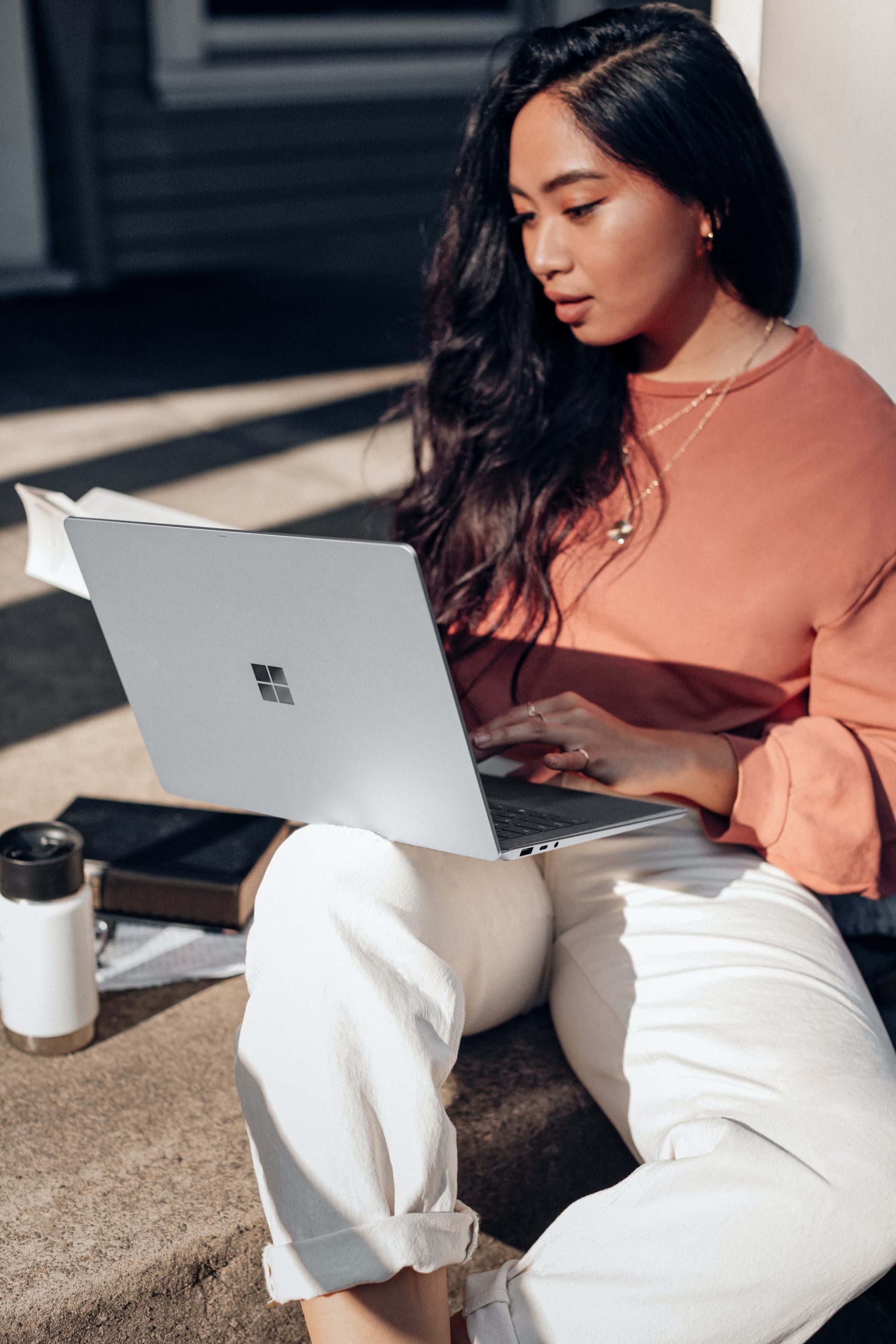Learn It


An operating system (OS) is important software that runs on a computer. It manages the computer’s memory and processes, as well as all of its software and hardware. It also allows you to communicate with the computer without knowing how to speak the computer’s language. Without an operating system, a computer is useless.
The computer’s operating system (OS) manages all of the software and hardware on the computer. Most of the time, there are several different computer programs running at the same time, and they all need to access your computer’s central processing unit (CPU), memory, and storage. The operating system coordinates all of this to make sure each program gets what it needs.
Operating systems usually come pre-loaded on any computer you buy. Many people choose the computer they buy based on the operating system, but it’s possible to upgrade or even change operating systems. The operating system consists of many smaller programs, stored as system files, which transfer data to and from the disk and transfer data in and out of your computer’s memory. Other functions performed by the operating system include hardware-specific tasks such as checking to see if a key has been pressed on the keyboard and, if it has, displaying the appropriate letter or character on the screen.
Most operating systems use a graphical user interface, or GUI (pronounced goo-ee). A GUI lets you use your mouse to click icons, buttons, and menus. Everything is clearly displayed on the screen using a combination of graphics and text.
Functions of an operating system include:
- Booting
– Booting is the process of turning on the computer and powering up the system. - Memory management
– This is the process of controlling and coordinating the computer applications and allocating space for programs. - Loading and execution
– Your OS will load, or start-up, a program and then execute the program so that it opens and runs. - Data security
– The OS is in charge of keeping data safe inside your computer and computer programs. They set up security features that keep unwanted cyberattackers at bay. - Disk management
– This manages all the drives installed in a computer like hard drives, optical disk drives, and flash drives. Disk management can be used to divide disks, format drives, and more. - Process management
– Your OS has to allocate resources to different processes on the machine, enable the processes to share information, protect them, and synchronize them - Device controlling
– Your OS will allow you to open or block access to devices like removable devices, CD/DVDs, data transfer devices, printers, USBs, and others. - Printing controlling
– Simply put, your OS takes control of the printers that are connected to the computer, and the materials that need to be printed. - User interface
– A user interface or UI refers to the part of the OS that allows a user to enter and receive information. This can be done with typed commands, code, and others.
Common Operating Systems:
Microsoft Windows
Linux
Apple iOS
Mobile vs. computer

Mobile devices, like smartphones and tablets, may use different operating systems than computers. Computer and mobile OSs are different because they are developed for different uses. Computer systems will have to store lots of complex data, have a different user interface, and be prepared for printing, removable disks, a mouse and keyboard. They feature a desktop and a control panel for users to manage all of their information. Computer operating systems have been around longer, and therefore are more familiar.
Mobile devices don’t feature a desktop that’s the same as a computer desktop. Their user interface is much more about simple moves, things you can do with your fingers or voice, and a simple interface. Mobile OS also allows the user to watch movies, browse the Web, manage calendars, and play games. Examples of mobile operating systems include Apple iOS and Google Android. Touch screen interfaces, like those used on smartphones and mobile devices are becoming increasingly popular and some newer Operating Systems are touch screen compatible.
Since Microsoft Windows holds the vast majority of the business market share, we will primarily focus on Microsoft going forward.

Windows 10
Windows 10 is an operating system developed by Microsoft Corporation that works with mobile computing devices and also with traditional desktop and laptop PCs.
The three major tasks of Windows 10 are to:
- Manage your computer’s hardware—the printers, scanners, disk drives, monitors, and other hardware attached to it.
- Manage the application software installed on your computer—programs like those in Microsoft Office and other programs you might install to edit photos and videos, play games, and so on.
- Manage the data generated from your application software. Data refers to the documents, worksheets, pictures, songs, and so on that you create and store during the day-to-day use of your computer.
The Windows 10 operating system continues to perform these three tasks, and additionally is optimized for touchscreens; for example, tablets of all sizes and convertible laptop computers. Windows 10 works equally well with any input device, including a mouse, keyboard, touchscreen, and pen—a pen-shaped stylus that you tap on a computer screen.
Windows 10 Operating System manages programs and applications that run on a computer. A program is a set of instructions that a computer uses to accomplish a task. A computer program that helps you perform a task for a specific purpose is referred to as an application. As an example, there are applications to create a document using word processing software, to play a game, to view the latest weather report, to edit photos or videos, or to manage financial information.
As we learned earlier, an operating system is a specific type of computer program that manages the other programs on a computing device such as a desktop computer, a laptop computer, a smartphone, a tablet computer, or a game console. You need an operating system to:
- Use application programs.
- Coordinate the use of your computer hardware such as a keyboard, mouse, touchpad, touchscreen, game controller, or printer.
- Organize data that you store on your computer and access data that you store on your own computer and in other locations.
Windows 10, uses a graphical user interface—abbreviated as GUI. A graphical user interface uses graphics such as an image of a file folder that you click to activate the item represented. A GUI commonly includes the following:
- A pointer—any symbol that displays on your screen in response to moving your mouse and with which you can select objects and commands.
- An insertion point—a blinking vertical line that indicates where text will be inserted when you type or where an action will take place.
- A pointing device, such as a mouse or touchpad, to control the pointer.
- Icons—small images that represent commands, files, applications, or other windows.
- Desktop—a simulation of a real desk that represents your work area; here you can arrange icons such as shortcuts to programs, files, folders, and various types of documents in the same manner you would arrange physical objects on top of a desk.
In Windows 10, you also have a Start menu with tiles that display when you click the Start button in the lower left corner of your screen. The tiles serve as an inter-connected dashboard to all of your important programs, sites, and services. On the Start menu, your view is tailored to your information and activities. The Windows 10 Start menu is a table of contents to all the apps (programs), folders and contacts you use often. In Desktop mode, all the app icons appear in an alphabetical list on the left side of the screen, and they can be made to appear on the right side as tiles. To open the Start menu—which contains all your apps, settings, and files—do either of the following:
-

. On the left end of the taskbar, select the Start icon.
- Press the Windows logo key on your keyboard.
Depending on your desktop configuration, you may see a search box with ‘Type to search’. This is one way to access Cortana. Cortana is a voice-enabled virtual assistant developed by Microsoft to help Windows 10 users initiate requests, complete tasks and anticipate future needs by surfacing relevant data in a personal context.
The hardware of your computer such as the central processing unit (CPU), memory, and any attached devices such as a printer, are collectively known as resources. The Windows operating system keeps track of the status of each resource and decides when a resource needs attention and for how long. Application programs enable you to do work on, and be entertained by, your computer—programs such as Word and Excel found in the Microsoft Office suite of products, Adobe Photoshop, and computer games. The operating system ensures all of these programs work together in the most efficient way possible.
One of the most often used functions of the operating system is data management, or the managing of your files and folders. Just like the importance of keeping your paper documents and file folders organized so that you can find information when you need it, organizing your computer files and folders is to group your files so that you can find information easily. This
is a critical computing skill. After all, are files useful if you cannot find them?

On a single computer, Windows 10 can have multiple user accounts. This is useful because you can share a computer with other people in your family or organization and each person can have his or her own information and settings—none of which others can see. Each user on a single computer is referred to as a user account. Take a moment to think about the user account you will be using for this class. If you are working from campus, what will your user account be? Compare that to your user account on your personal computer.
In addition to your user account, the Windows 10 display may look different depending on the computer you are using. Windows 10 displays are configurable. For example, your college may choose to use their school colors or logo on the display. The basic functions and structure of Windows 10 are not changed by such variations in the display. You can be confident that the skills you will practice in this instruction apply to Windows 10 regardless of available functionality or differences between the figures shown and your screen. Therefore, it is important to not let visual differences in the display distract you.
Your screen will more closely match the computers on campus, and your instructors, if you set your screen resolution to 1280 × 768. At other resolutions, your screen will closely resemble, but not match exactly. To view your screen’s resolution, on the desktop, right-click in a blank area, click Display settings, and then click the Resolution arrow. To adjust the resolution, select the desired setting, and then click OK.
As mentioned earlier, Windows 10 allows you to create a Microsoft account, and then use that account to sign in to any Windows 10 computer on which you have, or create, a user account. By signing in with a Microsoft account you can:
- Download apps from the Microsoft Store
- Get your online content—email, social network updates, updated news—automatically displayed in an app when you sign in
To enjoy and get the full benefit of Windows 10, Microsoft Office, Skype, and free OneDrive cloud storage, if you have not already done so, create a Microsoft account. This can be completed with the link provided from your instructor.
A primary function of any operating systems is managing the location of files and folders. A location is any disk drive, folder, or other place in which you can store files and folders. A file is information stored on a computer under a single name. A folder is a container in which you store files. Where you store your files depends on how and where you use your data. For example, for your OFTEC 108 class, you might decide to store your work on a removable USB flash drive so that you can carry your files to different locations and access your files on different computers.
If you do most of your work on a single computer, for example, your home desktop system or your laptop computer that you take with you to school or work, then you can store your files in one of the folders on your hard drive provided by your Windows operating system—Documents, Music, Pictures, or Videos. If you use multiple computers, a flash drive might be a better option to store your files.
OneDrive is Microsoft’s free cloud storage for anyone with a free Microsoft account. Cloud storage refers to online storage of data so that you can access your data from different places and devices. Cloud computing refers to applications and services that are accessed over the internet, rather than to applications that are installed on your local computer. Besides being able to access your documents from any device or location, OneDrive also offers AutoSave, which saves your document every few seconds, so you don’t have to. On a Windows system, AutoSave is available in Word, Excel, and PowerPoint for Office 365 subscribers. Changes to your document are saved to the cloud as you are working, and if other people are working on the same file—referred to as real-time co-authoring—AutoSave lets them see your changes in a matter of seconds.
If you have an Office 365 subscription—one of the versions of Microsoft Office to which you subscribe for an annual fee or download for free with your college .edu address—your storage capacity on OneDrive is a terabyte or more, which is more than most individuals would ever require. Students at South Puget Sound Community College can download Office 365 for free.
Because many people now have multiple computing devices—desktop, laptop, tablet, smartphone—it is common to store data in the cloud so that it is always available. Synchronization, also called syncing—pronounced SINK-ing—is the process of updating computer files that are in two or more locations according to specific rules. So, if you create and save a Word document on your OneDrive using your laptop, you can open and edit that document on your tablet in OneDrive. When you close the document again, the file is properly updated to reflect your changes. Your OneDrive account will guide you in setting options for syncing files to your specifications. You can open and edit Office files by using Office apps available on a variety of device platforms, including iOS, Android, in a web browser, and in Windows.

It is important to note that if you are using a computer issued by your college (either on campus or checked out), or a computer issued by your employer, you may not be able to sign in using your personal Microsoft account. This is because sign-in requirements will vary, because those computers are controlled by the organization’s IT (Information Technology) professionals who are responsible for maintaining a secure computing environment for the entire organization.
Microsoft Office runs efficiently on Microsoft Windows. Which makes sense because they are both Microsoft!
As of April of 2020, Office 365 will be known as Microsoft 365. According to Microsoft, it is “an evolution of Office 365 that builds on the foundation of Office by infusing new artificial intelligence and more cloud-powered experiences”. Microsoft Office 365 is available for free to students at South Puget Sound Community College.
Office 365 is a cloud-based subscription service that receives continuous updates. Due to this, you may encounter some variations in what appears on your screen and what is shown in this text or your professor. Microsoft Office 365 is fully installed on your PC or Mac; no internet access is necessary to create or edit documents. When you are connected to the internet, you will receive monthly upgrades and new features, so you always have the latest versions of Office apps as soon as they are available. Your subscription gives you continuous free access to the latest innovations and refinements. It is important to note the Microsoft Access does not run on a Mac.
The programs in Office 365 and in Microsoft Office 2019 are considered to be desktop apps. This is a computer program that is installed on your PC and that requires a computer operating system such as Microsoft Windows to run. A desktop app typically has hundreds of features and takes time to learn. We will focus on Windows 10 and higher, as that is the recommended configuration going forward.


